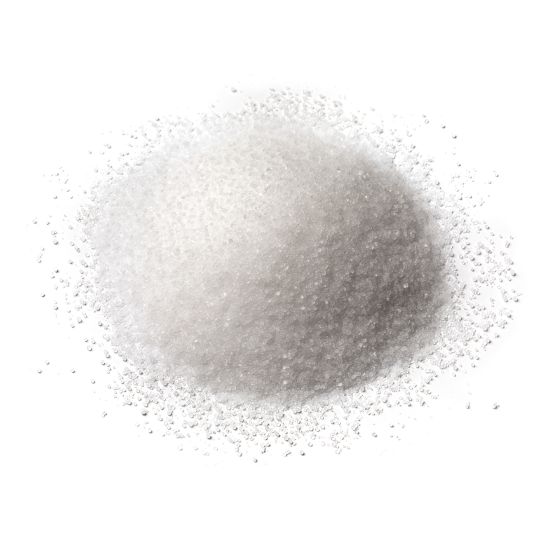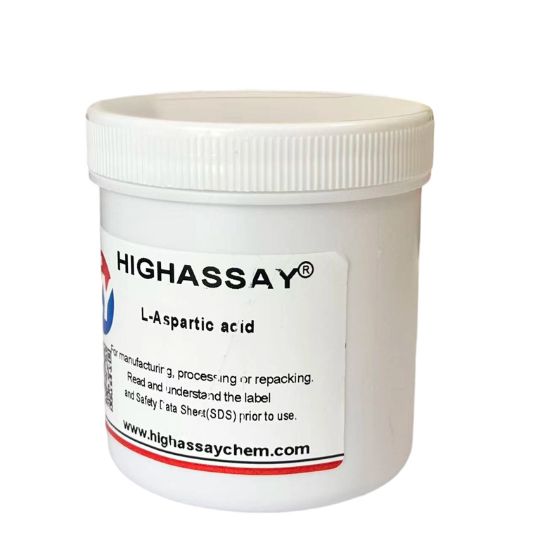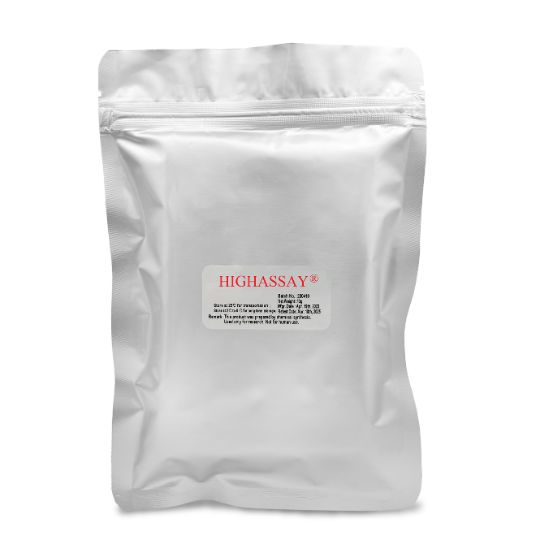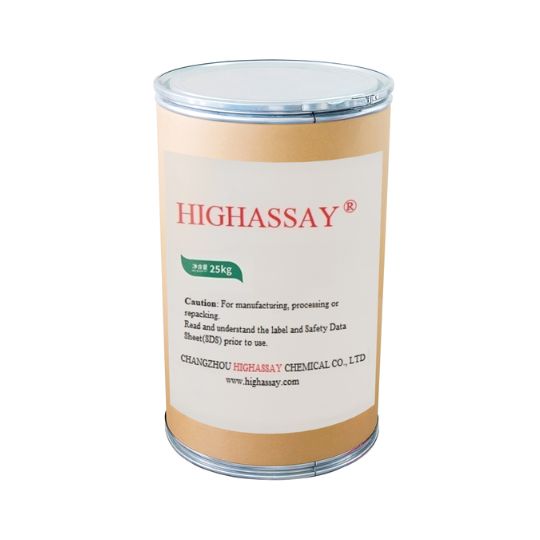What is L-Aspartic Acid?
L-Aspartic acid is a non-essential amino acid. While widely found in plants and animals, it is found in the highest concentrations in sugar beets and sugarcane. This makes it particularly beneficial for vegetarians, who can obtain sufficient L-Aspartic acid through their daily diet. Unlike other amino acids, which are mostly found in meat products, L-Aspartic acid is crucial to the human body, participating in protein synthesis, nerve signal transmission, and various metabolic functions. It is also used in various fields, including medicine and industry.
Highassay offers L-Aspartic acid that meets the quality standards of the United States Pharmacopoeia and AJI92. If you require it, please contact us immediately.
Benefits of L-Aspartic Acid
- L-Aspartic acid helps regulate brain activity and has significant effects on enhancing memory, improving cognitive ability, and relieving anxiety. However, it is important to note that excessive L-Aspartic acid can have adverse effects on the brain and body.
- L-Aspartic acid helps increase energy metabolism. Taking appropriate amounts of L-Aspartic acid supplements before and after exercise can relieve fatigue and accelerate muscle and physical recovery.
- L-Aspartic acid promotes protein synthesis, enhances cell activity, provides raw materials for cell repair and regeneration, and plays a significant role in boosting the body’s immune system.
- L-Aspartic acid is a key raw material for the production of products such as L-Alanine and polyaspartic acid. It has a wide range of applications. With the continuous development of society and technological advancements, production methods have become more diverse, including traditional fermentation and ensuring sufficient supply.
If you have any questions about processing L-Aspartic acid, Highassay’s R&D team is here to help.

A Brief Introduction to L-Aspartic Acid
Molecular Formula:C4H7NO4
Molecular Weight:133.1
CAS No.:56-84-8
Appearance:White crystals or crystalline powder
Regular commercial package: 25kg/drum
Application of L-Aspartic Acid
Highassay adheres to strict quality control (QC) to produce L-Aspartic acid. Buy L-Aspartic acid in bulk from us now to get competitive market prices.

In addition to being the primary raw material for aspartame and used in the production of L-Alanine, which is used as a food additive, it can also be synthesized into polyaspartic acid for use in water treatment, fertilizers, detergents, and other fields.
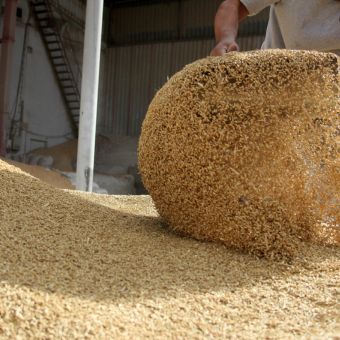
Besides being added directly to food, it acts as a natural flavoring, enhancing the taste and benefiting human health. It can also be added to animal feed to enrich the taste and enhance the nutritional value of the food.

Besides being made into various health supplements, it can also be used in the preparation of medicines and infusions, improving myocardial function, enhancing liver function, and relieving fatigue. It can also be used as an amino detoxifier.

Added as a nutritional additive to cosmetics, it not only keeps the skin hydrated, but also whitens and increases skin elasticity, giving it a youthful and healthy appearance.
Side Effects of L-Aspartic Acid Overdose
Although L-Aspartic acid has a wide range of applications and is beneficial and essential to the human body, excessive intake is advised. Strictly controlling L-Aspartic acid usage is crucial. Excessive intake can cause a range of side effects, including liver damage, nausea, and itchy skin with long-term use. It can also cause the brain to become overexcited, affecting mood and leading to mental illness.
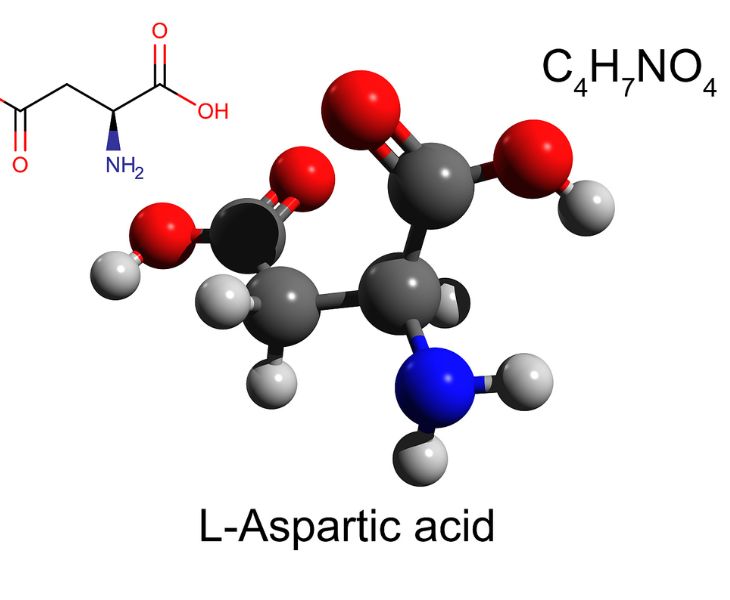

Relationship between L-Aspartic Acid and Polyaspartic Acid
Multiple L-Aspartic acids can be chemically linked to form polyaspartic acid. The greatest advantage of polyaspartic acid is that it is an environmentally friendly, fully biodegradable chemical. In addition to its significant scale inhibition and viscosity reduction properties, it can also be combined with cross-linking agents to form a super absorbent. It is commonly used in the production of sanitary products such as diapers and as a fertilizer enhancer in agriculture.
L-Aspartic Acid VS D-Aspartic Acid
L-Aspartic acid and D-Aspartic acid are enantiomers of each other, with distinct existence and functions. L-Aspartic acid assists in protein building and is primarily used in protein synthesis. D-Aspartic acid, however, is less abundant in mammals and is a neuromodulator, primarily involved in the production and release of certain hormones.
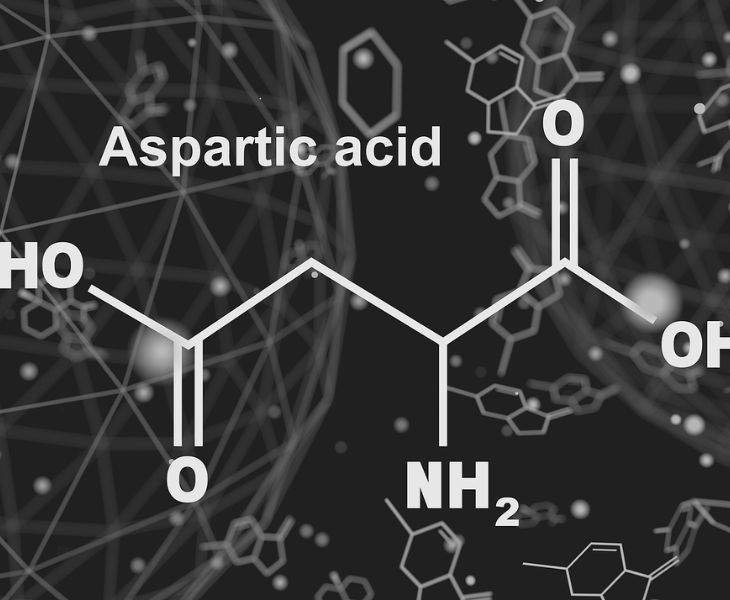
We ship products with the most recent batch number to ensure the product has the longest shelf life.
The amino acid grade you choose varies depending on your intended use. Higher-grade products are more expensive, but we offer the largest wholesale discounts, especially for larger quantities. Please contact us as soon as possible if you have any questions.
We ship within 1-3 days. We can specify your preferred shipping method and offer expedited service.
Specification of L-Aspartic acid
| L-Aspartic Acid | USP32 | AJI92 |
| Assay | 98.5~101.5% | 99.0-100.5% |
| PH | / | 2.5-3.5 |
| Specific rotation[a]D20 | + 24°~ + 26° | +24.8°-+25.8° |
| Specific rotation[a]D25 | / | / |
| Transmittance(T430) | / | ≥98.0% |
| Chloride(Cl) | ≤ 0.02% | ≤0.02% |
| Ammonium(NH4) | / | ≤0.02% |
| Sulfate(SO4) | ≤ 0.03% | ≤0.02% |
| Iron(Fe) | ≤ 0.001% | ≤10PPM |
| Heavy metals(Pb) | ≤ 0.001% | ≤10PPM |
| Arsenic | / | ≤1PPM |
| Other amino acids | / | conform |
| Ninhydrin-positive substances | / | / |
| Loss on drying | ≤ 0.5% | ≤0.20% |
| Residue on ignition | ≤ 0.1% | ≤0.10% |
| Total plate count | ≤ 1000 CFU/g | ≤ 1000 CFU/g |
| Moulds & Yeasts | ≤ 100 CFU/g | ≤ 100 CFU/g |


